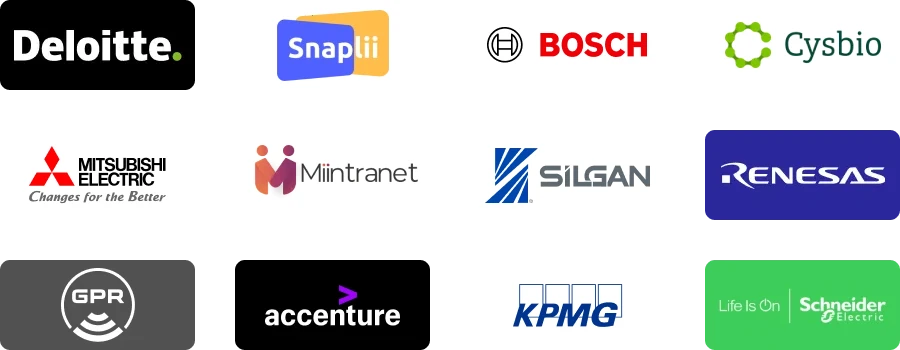| REPORT ATTRIBUTE |
DETAILS |
| Historical Period |
2019-2022 |
| Base Year |
2023 |
| Forecast Period |
2024-2032 |
| United States Telecom Tower Power System Market Size 2024 |
USD 593.7 Million |
| United States Telecom Tower Power System Market, CAGR |
5.7 % |
| United States Telecom Tower Power System Market Size 2032 |
USD 925.05 Million |
Market Overview:
The United States Telecom Tower Power System Market is projected to grow from USD 593.7 million in 2024 to an estimated USD 925.05 million by 2032, with a compound annual growth rate (CAGR) of 5.7 % from 2024 to 2032.
Key drivers of the United States Telecom Tower Power System market include the exponential growth in mobile data consumption, fueled by increasing smartphone penetration and the proliferation of connected devices across industries. The nationwide rollout of 5G networks is a pivotal factor, requiring extensive telecom infrastructure upgrades and robust power solutions to support high-speed, low-latency networks. The need for uninterrupted connectivity has heightened the demand for reliable backup power systems, particularly in off-grid and underserved areas prone to power outages. Additionally, there is a growing shift towards renewable energy sources such as solar and wind for powering telecom infrastructure, driven by the dual goals of reducing operational costs and achieving sustainability targets. Government incentives and regulatory support for green energy adoption are further accelerating investments in advanced hybrid systems, energy-efficient technologies, and long-lasting battery storage solutions, which enhance both reliability and cost-effectiveness.
Regionally, the market shows dynamic growth across urban, suburban, and rural areas, each with distinct drivers. Urban regions dominate, hosting a high density of telecom towers that cater to data-intensive applications and the accelerated deployment of 5G networks. Suburban areas are witnessing substantial growth as service providers expand coverage to meet growing consumer demand. In rural areas, government-backed initiatives to bridge the digital divide are spurring new telecom tower installations, with a focus on sustainable and off-grid power solutions. The adoption of hybrid and renewable energy systems is especially critical in these regions, where grid connectivity is limited or inconsistent. These regional dynamics highlight the strategic importance of innovative power solutions in advancing the country’s telecommunications infrastructure and ensuring seamless connectivity nationwide.
Access crucial information at unmatched prices!
Request your sample report today & start making informed decisions powered by Credence Research Inc.!
Download Sample
Market Insights:
- The market is projected to grow from USD 593.7 million in 2024 to USD 925.05 million by 2032, with a CAGR of 5.7%, driven by rising mobile data consumption and 5G deployment.
- Hybrid power systems, integrating renewable energy with traditional sources, are gaining traction due to their cost-efficiency and sustainability benefits.
- Advanced battery storage technologies, particularly lithium-ion batteries, are transforming energy reliability and reducing maintenance needs.
- Government incentives promoting renewable energy adoption are accelerating investments in solar, wind, and energy-efficient power solutions for telecom towers.
- Urban regions dominate the market with a 45% share, driven by dense telecom tower networks supporting data-heavy applications and real-time energy monitoring solutions.
- Rural areas, contributing 20% of the market share, are experiencing rapid growth through off-grid and renewable power solutions supported by government-led connectivity initiatives.
- Regulatory pressures and environmental goals are spurring innovation in sustainable energy technologies, fostering a transition toward eco-friendly power systems across the industry.
Market Drivers:
Expansion of 5G Network Infrastructure
The rapid rollout of 5G networks across the United States is a key driver of the telecom tower power system market. As service providers upgrade their infrastructure to support high-speed, low-latency connectivity, the demand for advanced power solutions to ensure uninterrupted operations is surging. 5G technology requires increased tower density and higher energy consumption, making efficient and reliable power systems essential. This trend is prompting operators to invest in hybrid solutions that combine traditional power sources with renewable energy, ensuring continuous power supply while optimizing energy use.
Growing Mobile Data Consumption and Connected Devices
The exponential growth in mobile data consumption and the proliferation of connected devices are significantly influencing the market. With the rise of Internet of Things (IoT) applications, smart devices, and streaming services, telecom operators must ensure robust network performance, even during peak demand. This reliance on seamless connectivity necessitates dependable power systems for telecom towers, especially in data-heavy urban centers and off-grid rural areas. Battery storage solutions and energy-efficient technologies are becoming increasingly critical to address these challenges, driving the adoption of advanced power system designs.
Transition to Renewable Energy Sources
The shift towards sustainable energy solutions is a major factor shaping the telecom tower power system market. Telecom operators are increasingly adopting solar, wind, and hybrid energy systems to reduce carbon emissions and operational costs. For example, hybrid energy systems that incorporate solar photovoltaic panels, wind turbines, and fuel cells are being utilized to power telecom towers, reducing fossil fuel consumption and mitigating carbon emissions. Government incentives and policies promoting green energy adoption are further driving this transition, creating opportunities for advanced energy storage technologies and hybrid power systems that integrate renewables with traditional energy sources
Rising Demand for Reliable Backup Power Systems
The growing need for reliable backup power systems to mitigate risks associated with power outages and grid instability is a crucial market driver. Telecom towers are critical infrastructure, and any disruption in power supply can lead to network downtime, affecting millions of users. To address this, operators are investing in innovative backup solutions such as lithium-ion batteries, fuel cells, and hybrid systems. For instance, telecom facilities often require backup capabilities of 24 to 72 hours in areas prone to extended power outages. These technologies not only provide reliable power but also enhance operational efficiency by reducing maintenance and downtime. This focus on reliability is fostering the development and adoption of next-generation power solutions tailored to the evolving needs of the telecom sectorhttps://www.mckinsey.com/industries/technology-media-and-telecommunications/our-insights/the-case-for-committing-to-greener-telecom-networks
Market Trends:
Increasing Adoption of Hybrid Power Solutions
The United States Telecom Tower Power System market is witnessing a growing trend toward hybrid power solutions, which integrate conventional energy sources with renewable technologies like solar and wind. These systems are gaining traction as operators seek to balance operational efficiency with environmental sustainability. For example, AT&T’s off-grid solar site in California utilizes a hybrid system with a 15kWp solar PV array and a 60kVA diesel generator, reducing diesel generator runtime from 6 hours to just 50 minutes daily. Hybrid power solutions are particularly advantageous for remote and off-grid locations, where access to the electrical grid is limited or unreliable. By combining the reliability of traditional power systems with the cost-saving and eco-friendly benefits of renewables, hybrid systems are emerging as a preferred choice for telecom operators. The deployment of these systems reflects a broader industry shift toward reducing carbon footprints while ensuring consistent power supply.
Growth of Energy Storage Technologies
Energy storage technologies, particularly advanced battery systems, are transforming the telecom tower power system landscape. Lithium-ion batteries are becoming increasingly popular due to their higher energy density, longer lifespan, and ability to integrate seamlessly with renewable energy sources. These batteries offer significant advantages over traditional lead-acid systems, including reduced maintenance requirements and improved efficiency. As the demand for uninterrupted connectivity grows, energy storage solutions are being adopted not only for backup power but also to manage fluctuating energy demands in hybrid systems. This trend is further fueled by declining costs of lithium-ion batteries and ongoing innovations in energy storage technologies.
Emphasis on Energy Efficiency and Cost Reduction
Telecom operators are prioritizing energy-efficient solutions to address rising energy costs and operational challenges. Advanced power management systems equipped with monitoring and analytics capabilities are being widely adopted to optimize energy usage and reduce waste. For example, Vertiv’s energy management tactics for telecom networks include deploying hybrid energy systems and advanced rectifiers to enhance efficiency. These systems enable operators to identify inefficiencies, manage power loads effectively, and minimize downtime. The focus on energy efficiency is particularly critical for telecom towers in urban areas, where dense networks require higher energy consumption. By implementing smarter energy solutions, operators are not only achieving cost savings but also aligning with sustainability goals, contributing to a more resilient and eco-conscious infrastructure.
Increasing Investment in Remote Connectivity
The expansion of connectivity to remote and underserved areas is driving significant investments in telecom tower infrastructure and power systems. Government initiatives and private sector efforts to bridge the digital divide are accelerating the deployment of towers in rural regions, where grid electricity is often unavailable. To support these installations, renewable and hybrid power systems are being increasingly adopted to provide reliable, off-grid energy solutions. These investments are also creating opportunities for innovative technologies, such as fuel cells and next-generation energy storage, which offer enhanced reliability and performance in challenging environments. The emphasis on remote connectivity highlights the growing importance of robust and sustainable power systems in supporting the nation’s telecommunications expansion.
Market Challenges Analysis:
High Initial Investment Costs
One of the key restraints in the United States Telecom Tower Power System market is the high initial cost associated with deploying advanced power solutions. The integration of hybrid systems, renewable energy sources, and advanced battery storage technologies requires substantial capital investment. While these systems offer long-term cost savings and sustainability benefits, the upfront financial burden can be prohibitive for smaller telecom operators and service providers. This challenge is particularly pronounced for installations in rural and remote areas, where additional infrastructure costs for off-grid energy solutions further amplify expenses.
Challenges in Renewable Energy Integration
Although the transition to renewable energy sources is gaining momentum, integrating these technologies into telecom power systems presents challenges. Variability in solar and wind energy output, caused by weather and environmental conditions, can impact the reliability of renewable-based power systems. Ensuring consistent power supply requires advanced energy storage solutions and sophisticated energy management systems, which increase complexity and costs. Additionally, maintaining and managing renewable energy systems in remote areas can pose logistical difficulties, limiting their widespread adoption.
Limited Grid Infrastructure in Rural Areas
The lack of robust grid infrastructure in rural and underserved areas remains a significant challenge. Telecom operators expanding network coverage to these regions must rely on off-grid power solutions, which are often more expensive and complex to implement. Limited access to reliable grid electricity also increases dependence on diesel generators, which are less sustainable and face rising regulatory scrutiny due to their environmental impact. Addressing these infrastructure gaps is critical for ensuring seamless connectivity in remote areas.
Growing Regulatory and Environmental Pressures
The telecom industry is increasingly facing regulatory and environmental pressures to adopt sustainable and energy-efficient practices. While these regulations encourage innovation, compliance can add to operational costs and complicate project timelines. Balancing regulatory requirements with the need for affordable and reliable power systems remains a persistent challenge for operators. Overcoming these restraints will require continued advancements in technology, supportive policies, and collaborative efforts among stakeholders to create cost-effective and sustainable solutions.
Market Opportunities:
The United States Telecom Tower Power System market offers significant opportunities, driven by the increasing demand for sustainable and reliable power solutions to support the expansion of telecom infrastructure. The ongoing rollout of 5G networks requires a dense tower network with robust power systems capable of handling higher energy demands and ensuring uninterrupted connectivity. This transition provides opportunities for the deployment of hybrid power solutions that integrate renewable energy sources such as solar and wind. These systems not only address rising operational costs but also align with environmental goals, making them an attractive option for operators seeking to enhance energy efficiency and sustainability. Additionally, advancements in energy storage technologies, such as lithium-ion batteries, present a compelling opportunity to improve reliability and performance while reducing maintenance costs.
Remote and underserved regions present another critical area of growth. Government initiatives aimed at bridging the digital divide are spurring investments in telecom tower infrastructure in rural areas. These regions often rely on off-grid power systems, creating a strong demand for renewable and hybrid solutions tailored to these environments. Innovative technologies such as fuel cells and next-generation energy storage are gaining traction as they offer enhanced reliability in challenging conditions. By focusing on these opportunities, market players can expand their footprint, cater to evolving customer needs, and contribute to the modernization of the United States’ telecommunications infrastructure. The push toward green energy adoption and the growing emphasis on remote connectivity underscore the immense potential of this market.
Market Segmentation Analysis:
The United States Telecom Tower Power System market is segmented by power source type, capacity, and tower and station type, showcasing the diverse range of solutions catering to evolving industry demands.
By Power Source Type, the market includes grid power, backup batteries, diesel generators, solar power, wind power, and fuel cells. Grid power remains the primary energy source for urban and suburban telecom towers, while backup batteries, particularly lithium-ion, are gaining popularity for their efficiency and durability. Diesel generators continue to serve as reliable backup solutions, but renewable sources like solar and wind are growing rapidly due to sustainability goals and government incentives. Fuel cells, though emerging, are gaining traction in remote and off-grid locations.
By Capacity, the market spans systems up to 10 KVA, 10 to 100 KVA, and above 100 KVA. Small-capacity systems cater to micro and small cell towers, while larger systems support macro towers, distributed antenna systems, and edge data centers, ensuring scalability across diverse applications.
By Tower and Station Type, macro towers dominate due to their extensive use in urban and suburban regions for robust network coverage. Small cell and micro-cell 5G towers are expanding rapidly to support 5G rollout. Rural and remote towers, including 3G/LTE and radio/TV/satellite stations, rely heavily on off-grid power systems. Edge data centers, which enhance network latency and performance, represent an emerging segment driving demand for advanced power solutions.
Segmentation:
By Power Source Type:
- Grid Power
- Backup Batteries
- Lead Acid Batteries
- Li-ion Batteries
- Others
- Diesel Generators
- Solar Power
- Wind Power
- Fuel Cells
By Capacity:
- Up to 10 KVA
- 10 to 100 KVA
- Above 100 KVA
By Tower and Station Type:
- Macro Towers
- Small Cell Towers
- Distributed Antenna System
- Rooftop Towers
- Guyed Towers
- Monopoles
- Micro-cell 5G Towers
- Rural/Remote 3G/LTE Towers
- Radio/TV/Satellite Stations
- Edge Data Centers
Regional Analysis:
The United States Telecom Tower Power System market is shaped by regional dynamics influenced by varying levels of urbanization, infrastructure development, and energy accessibility. Urban, suburban, and rural regions each contribute uniquely to market growth, reflecting distinct priorities and challenges.
Urban regions, accounting for approximately 45% of the market share, lead in adopting advanced power solutions due to the high density of telecom towers supporting data-heavy applications and 5G network deployment. These regions demand energy-efficient and reliable power systems to cater to the growing data consumption and connected devices. The focus here is on advanced technologies like lithium-ion batteries, hybrid systems, and real-time energy monitoring solutions that enhance performance while optimizing operational costs. Urban areas also benefit from robust grid infrastructure, reducing reliance on off-grid solutions, although backup systems remain critical to mitigate outages.
Suburban areas hold around 35% of the market share, driven by expanding network coverage to meet growing consumer demand for connectivity. These regions often serve as transition zones between urban and rural areas, necessitating a mix of grid-connected and hybrid power solutions. Suburban telecom operators are increasingly adopting renewable energy sources like solar and wind to reduce costs and environmental impact. The deployment of hybrid systems in these regions highlights the emphasis on balancing reliability with sustainability.
Rural regions, contributing about 20% of the market share, represent a fast-growing segment due to ongoing efforts to expand connectivity in underserved areas. Government initiatives, such as rural broadband programs and funding for digital infrastructure, are spurring telecom tower installations in these regions. Given the limited grid infrastructure, off-grid power solutions—primarily hybrid and renewable systems—are in high demand. These systems enable reliable energy supply while addressing the logistical challenges of maintaining traditional power systems in remote locations.
Key Player Analysis:
- ABB Ltd
- Alpha Technologies
- American Tower Corporation
- Ascot Group
- Crown Castle International Corp
- Cummins Inc.
- Delta Electronics Inc.
- Dynamic Power Group
- Eaton Corporation Plc
- GE Energy
- Huawei Technologies Co., Ltd
- Mayer Power Products
- SBA Communications Corporation
- Schneider Electric
- Staticon
- STMicroelectronics NV
- UNIPOWER
- Vertiv
- Voltserver
- ZTE Corporation
Competitive Analysis:
The United States Telecom Tower Power System market is characterized by moderate competition, with key players vying for market share through technological innovation and strategic partnerships. Prominent companies such as Vertiv Group, Schneider Electric, Eaton Corporation, and Cummins Inc. lead the market due to their comprehensive product portfolios, which include advanced hybrid systems, renewable energy solutions, and cutting-edge energy storage technologies. These players leverage their established distribution networks and strong customer relationships to maintain a competitive edge. Emerging companies and niche providers are gaining traction by focusing on specialized solutions tailored to rural and off-grid applications. The market is further shaped by collaborations between telecom operators and power system manufacturers to address rising energy demands and regulatory pressures for sustainability. Continuous innovation, particularly in energy-efficient systems and renewable integration, is essential for players to remain competitive in this evolving market landscape.
Recent Developments:
- In 2024, T-Mobile significantly expanded its presence, acquiring USCellular assets for $4.4 billion in May to enhance its rural market reach. The company partnered with KKR in a $4.9 billion deal for a 50% stake in Metronet, aiming to cover 6.5 million homes by 2030. Additionally, T-Mobile collaborated with EQT to acquire Lumos for $950 million, adding 7,500 miles of fiber network infrastructure.
- In September 2024, Verizon secured a strategic $3.3 billion tower lease agreement with Vertical Bridge for 6,339 towers, featuring a 10-year initial term extendable up to 50 years. The telecommunications sector also witnessed the transformative $13.4 billion merger of Uniti and Windstream in May 2024, marking the largest U.S. telecom M&A deal of the year’s first half.
- GE introduced Lifespan in May 2022, a digital product suite designed to optimize renewable asset performance. Developed collaboratively with operators, it addresses challenges like disconnected systems, inconsistent data, and rising costs, advancing efficiency in renewable energy management.
Market Concentration & Characteristics:
The United States Telecom Tower Power System market exhibits a moderately concentrated structure, dominated by key players with established expertise in energy solutions and telecommunications infrastructure. Companies such as Vertiv Group, Schneider Electric, Eaton Corporation, and Cummins Inc. hold significant market shares, driven by their advanced offerings in hybrid power systems, renewable energy integration, and energy storage technologies. These market leaders benefit from robust R&D investments and extensive distribution networks that ensure widespread adoption across urban, suburban, and rural areas. The market is characterized by a strong emphasis on sustainability, with increasing adoption of renewable energy sources like solar and wind to power telecom towers. Hybrid systems, combining traditional power with renewables, are gaining traction due to their reliability and cost-effectiveness. Additionally, the push for energy efficiency and compliance with environmental regulations is fostering continuous innovation. This dynamic landscape highlights the market’s adaptability to evolving technological and regulatory demands.
Shape Your Report to Specific Countries or Regions & Enjoy 30% Off!
Report Coverage:
The research report offers an in-depth analysis based on By Power Source Type, By Capacity and By Tower and Station Type It details leading market players, providing an overview of their business, product offerings, investments, revenue streams, and key applications. Additionally, the report includes insights into the competitive environment, SWOT analysis, current market trends, as well as the primary drivers and constraints. Furthermore, it discusses various factors that have driven market expansion in recent years. The report also explores market dynamics, regulatory scenarios, and technological advancements that are shaping the industry. It assesses the impact of external factors and global economic changes on market growth. Lastly, it provides strategic recommendations for new entrants and established companies to navigate the complexities of the market.
Future Outlook:
- The market is expected to grow steadily, driven by the nationwide expansion of 5G networks and increasing data consumption.
- Adoption of hybrid power solutions integrating renewable energy will accelerate, reducing operational costs and environmental impact.
- Advancements in energy storage technologies, particularly lithium-ion batteries, will enhance reliability and performance.
- The shift toward energy-efficient systems and real-time energy management tools will optimize resource utilization.
- Rural and underserved regions will see significant growth due to government-backed initiatives to expand connectivity.
- Rising regulatory pressure for sustainable energy adoption will drive innovation in eco-friendly power systems.
- Collaborations between telecom operators and power system providers will foster tailored solutions for diverse applications.
- Decreasing costs of renewable energy technologies will make solar and wind integration more accessible.
- Emerging technologies, such as fuel cells, will gain traction for off-grid and remote telecom tower sites.
- Increased investments in digital infrastructure will ensure robust and scalable power solutions across all regions.







